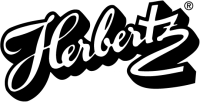Herbertz Solingen Scorpion Black Aluminium, Black Blade (44067 - 217911)
- Knife with scorpion motif. Combines hard to beat value for money and functionality. For those who expect the knife to perform reliably regardless of the passage of time. Made of good materials at a low price. Bestseller
Massive folder E.D.C. german brand Herbertz CJH with a scorpion on one of the facings. Knife combines with each other difficult to penetrate quality ratio to price i functionalities. For users who expect the knife to work reliably, regardless of the passage of time. Made of good materials at an attractive price. Bestseller!
AISI 420 (American Iron and Steel Institute) martensitic stainless steel rich in 0.15% carbon, including min. 12% chromium, which offers high hardenability in the range of 54-56 HRC and strength, ductility, machinability and excellent corrosion resistance. High carbon content creates chromium carbide compounds for wear resistance and edge retention after hardening. Due to its high hardness, the steel is suitable for manufacturing cutting tools, knife blades and medical instruments.
Head - type drop point, covered with a glare eliminating matte coating type BT (Black Teflon). The small thickness of the blade combined with the concave cut (Hollow Grind) gives excellent cutting properties combined with high strength. Solid blockade liner lock.
Handle - beveled edges of facings made of anodized aluminum in black with an eye-catching scorpion. Open design tzw. open-backed without the usual backspacer, fastened together with steel spacer sleeves for easy cleaning in the field. Metal clip (right-hand) allows the knife to be carried in the tip-down (with the tip of the blade downward).
Elaboration: the company Sharg®
Przeczytaj!
This product is intended for use only by adults with knowledge and experience in handling sharp cutting tools. Improper use of the knife can result in serious injuries. The blade is extremely sharp and can easily cut through skin and tissue; therefore, extra caution should always be exercised while cutting, and hands should be kept away from the cutting edge. To prevent the knife from slipping, it is recommended to cut on a stable, non-slip surface and avoid excessive force, which may cause uncontrolled blade movement.
Leaving the knife on the edge of a table, countertop, or in easily accessible places—especially where children are present—poses a significant safety risk. The knife should always be properly secured after use, ideally by placing it on a stable surface or storing it in designated knife blocks, protective sheaths, or magnetic strips. The knife should never be used for tasks it is not designed for, such as opening cans or prying objects, as this can damage the tool and lead to dangerous accidents.
A dull blade increases the risk of injury, as it requires more force and is more likely to slip from the material being cut. Therefore, it is essential to sharpen the knife regularly to maintain optimal sharpness. Additionally, proper cleaning and drying of the knife are necessary to prevent corrosion and bacterial growth. Periodic inspection of the handle and blade is recommended to check for cracks, chips, or looseness. If any damage is detected, the knife should be repaired or replaced immediately.
When using the knife, focus solely on the task at hand—avoid talking on the phone, watching television, or other distractions while cutting. Ensure proper lighting in the workspace for better visibility and control. Please note that some countries or regions have laws restricting the ownership and carrying of knives. Before purchasing or using this knife, verify that its use is legal in your location according to applicable regulations.
Following these safety guidelines will help ensure safe and effective knife use, minimizing the risk of accidents and extending the lifespan of the tool.













